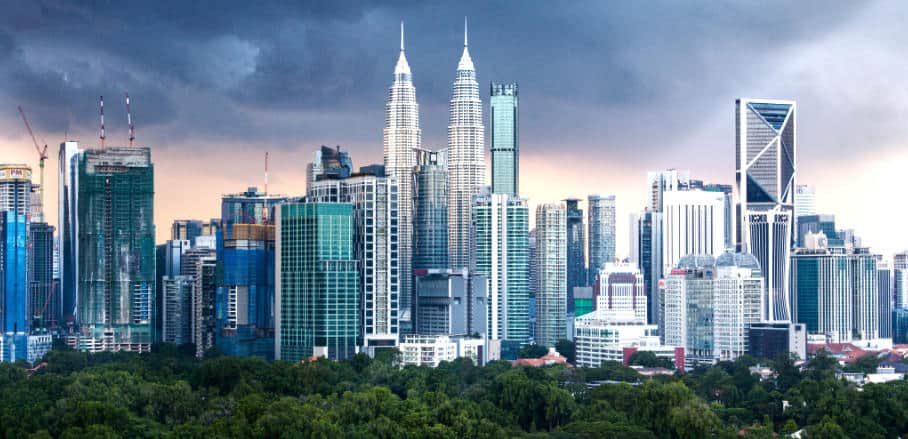Unwind and Connect: Creating Safe and Inclusive Public Spaces in Urban Districts of Malaysia
How can we transform the landscapes of Malaysian cities into green and sustainable neighbourhoods? Wan Azlina dissects the complex interplay of historical, economic, political, and cultural factors contributing to the scarcity of green spaces in Malaysian urban neighbourhoods.
Sustainable cities and communities – that’s the vision of United Nation’s Sustainable Development Goal 11. At its heart lies a critical objective: ensuring that anyone can enjoy access to safe and inclusive green and public spaces. While this objective holds great promise for enhancing the quality of urban life and promoting community well-being, certain urban neighbourhood areas in Malaysia face unique challenges in achieving this goal.
By 2020, the National Urbanisation Policy (NUP) of Malaysia has set a standard to achieve two hectares of green areas for every 1,000 people. This wasn’t just a number: It was the essence of the urban green space planning policy. It aimed to ensure that every citizen has access to urban green space, and fulfils their social needs, particularly in high-density urban areas.
Scarce Space to Connect with Nature and Community
The Federal Department of Town and Country Planning, Peninsular Malaysia (FDTCP) even produced a planning standard guideline to supervise the implementation of the open space policy in the country. However, this guideline has sparked debate, with some arguing it is difficult to achieve.
Among these challenges, the scarcity of green spaces within and near urban neighbourhood areas stands out as a key concern. The unequal development of neighbourhoods across various cities and states in Malaysia is a multifaceted issue driven by complex factors including historical background, economic, policy and cultural dimensions. These factors, often intertwined and reinforcing each other, contribute to disparities in quality of life, leaving urban neighbourhoods wanting spaces where people can connect with nature, unwind, and foster community bonds.
Nevertheless, People’s perception of the greenery in urban areas isn’t a one-size-fits-all narrative. For instance, the difference can be seen in terms of localities and cultural backgrounds which influence people’s behaviours and attitudes in green areas. Albeit in Malaysia, the current Malaysia Town and Country Planning Department (TCPD) Planning Guideline: Open Space and Recreation, Malaysian green spaces are classified based on their size yet, it’s a subject that sparks debate. What truly defines the success of these spaces? Is it their connectivity, the vibrancy of social activities, the image they project, or the level of comfort they provide? Therefore, delving into these specific challenges and discussing potential strategies to overcome them, ensures that all citizens can benefit from safe and inclusive green spaces.
Urbanisation and Green Space Challenges for Urban Neighbourhoods in Malaysia
One of the primary challenges in providing green and public spaces in the existing urban neighbourhoods of Malaysia is the limited availability of land. As cities expand to accommodate growing populations, open spaces are often sacrificed to make way for commercial buildings, and infrastructure. This trend results in densely populated urban areas with minimal room for parks and recreational areas.
With the establishment of the new township urban neighbourhood, concerns about potential inequality issues for the existing urban neighbourhood are rising. While urban development is essential for growth and progress, it’s crucial to ensure that the benefits are shared equitably among all residents. Such discrepancies magnify social disparities and hinder the potential for shared community experiences. For instance, let’s take a look at some of the new townships in Malaysia such as Setia Alam and The City of Elmina in Shah Alam, Selangor or Sunway City Iskandar Puteri in Johor. These urbanisation processes in Malaysia marginalise previous urban neighbourhoods to access green open spaces. This situation often arises due to a combination of factors, including urban planning decisions, economic pressures, and changes in land use by the local authority.
As the development of the new township urban neighbourhood is a reflection of to embrace of the sustainability agenda and commitment to advancing the SDGs in the Asian region, the property values tend to increase in proximity to green spaces, attracting investment and promoting responsible urban development. Nevertheless, sustainability isn’t just about greenery and the environment — it’s about looking at the bigger picture of poverty, inequality, housing, and well-being.
Navigating Challenges Through Strategic Approaches
To address these concerns, urban planners and policy-makers must focus on inclusive development strategies that benefit both the new townships and the existing urban neighbourhoods. Breathing new life into underutilised or neglected spaces presents an opportunity for green space expansion. Transforming abandoned areas or redeveloping brown-fields into well-designed parks can rejuvenate urban neighbourhoods.
Therefore, the key to catalysing the creation of green space lies in the collaboration between public entities, private stakeholders and research institutions that can leverage current research in urban neighbourhood development. Private developers can contribute to park development as part of their projects, benefiting from the latest findings in sustainable and community-oriented design. This not only lightens the financial burden on local authorities but also ensures the inclusion of cutting-edge green elements in urban design, resulting in more liveable and environmentally conscious neighbourhoods.
Establishing Inclusive Community Parks
Moreover, it is crucial to integrate green spaces into the existing urban neighbourhood from the outset. Planners can adopt innovative approaches such as vertical gardens, rooftop parks, and pocket parks to maximise land use efficiency. By embracing mixed-use developments that combine commercial and residential spaces with green areas, we can strike a balance between development and open spaces.
In the dynamic landscape of Malaysia’s urban neighbourhoods, the establishment of inclusive community parks stands as a critical endeavour. Balancing urban expansion with the preservation of green environments requires strategic thinking, community engagement, and policy advocacy. The provision of accessible and inclusive green spaces not only enriches the lives of urban residents but also contributes to a healthier and more harmonious urban ecosystem. As Malaysia continues to embrace urbanisation, the commitment to nurturing these green havens will play a pivotal role in creating vibrant, sustainable, and thriving urban neighbourhoods for all.
